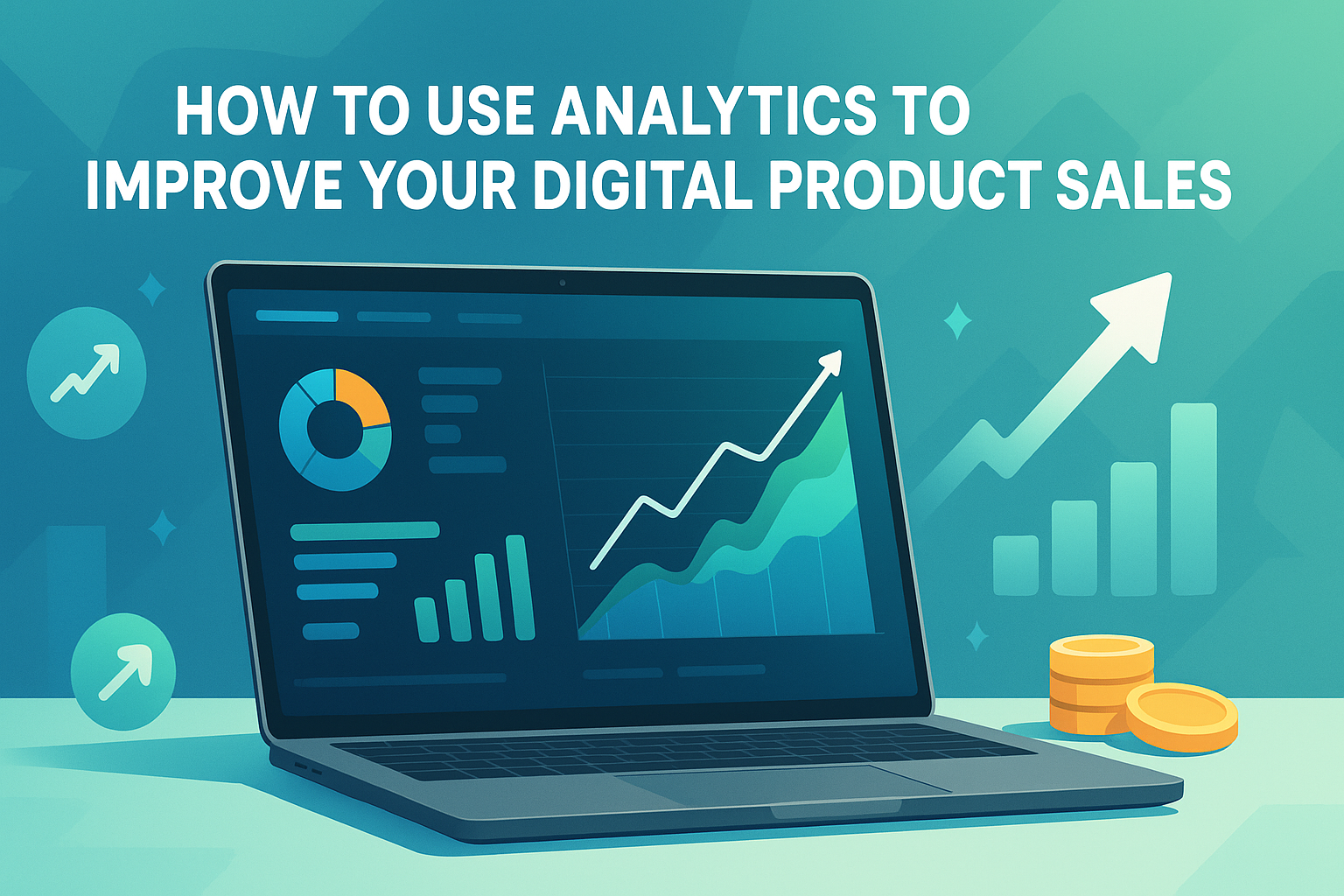How to Use Analytics to Improve Your Digital Product Sales
In today’s digital age, understanding your customer is paramount, and data analytics is the key to unlocking this knowledge. If you’re looking to boost your digital product sales, it’s time to harness the power of analytics. This guide will walk you through the essentials of using analytics to supercharge your sales strategy. 📊💡
Table of Contents
1. Introduction
2. Understanding the Basics of Analytics
3. Setting Up Your Analytics Tools
4. Analyzing Customer Behavior
5. Optimizing Your Sales Funnel
6. Personalizing Marketing Strategies
7. Monitoring and Adjusting Your Approach
8. Conclusion
9. FAQs

Introduction
Welcome to the world of data-driven decision-making! In our fast-paced digital marketplace, simply having a great product is not enough. To truly thrive, you must understand your audience and tailor your strategies to meet their needs. Analytics provides you with the insights needed to do just that. 🌐✨
Understanding the Basics of Analytics
Before diving into the nitty-gritty, let’s unpack what analytics truly means. Analytics involves the systematic computational analysis of data or statistics. It’s about discovering meaningful patterns that can help you make informed decisions.
For digital product sales, analytics can show you who’s visiting your site, what they’re interested in, and how they’re interacting with your products. It’s like having a crystal ball, only better! 🔮
Setting Up Your Analytics Tools
To get started, you’ll need the right tools. Google Analytics is a staple for most businesses, providing valuable insights into website traffic and user behavior. There are also specialized tools like Mixpanel and Kissmetrics that offer more detailed insights into user engagement.
Ensure your analytics tools are properly set up with tracking codes on your website. This setup will enable you to gather data effectively. Don’t worry if you’re not a tech wizard—most tools offer step-by-step guides to help you out. 🛠️
Analyzing Customer Behavior
Once your tools are in place, it’s time to dig into the data. Start by looking at key metrics such as page views, bounce rates, and average session duration. These will give you a sense of how users are interacting with your site.
Beyond basic metrics, focus on user flow and behavior reports. These insights show you the paths users take on your site and highlight potential drop-off points. Understanding these patterns can help you refine your user experience and keep visitors engaged. 🚀
Optimizing Your Sales Funnel
Your sales funnel is the journey customers take from learning about your product to making a purchase. By analyzing conversion rates at each stage, you can identify where potential customers are getting stuck or losing interest.
Implement A/B testing to experiment with different elements of your sales process. This might include tweaking your call-to-action buttons, adjusting pricing strategies, or refining product descriptions. Small changes can lead to significant improvements in conversion rates. 🔄
Personalizing Marketing Strategies
One size doesn’t fit all, especially in digital marketing. Use analytics to segment your audience based on demographics, interests, and behavior. This segmentation allows you to tailor your marketing messages to resonate with specific groups.
Personalization can significantly enhance customer engagement and loyalty. Consider personalized email campaigns or targeted ads that speak directly to the needs and desires of your audience. 🎯
Monitoring and Adjusting Your Approach
Analytics is not a one-and-done process. It requires continuous monitoring and adjustment. Set regular intervals to review your data and assess the effectiveness of your strategies.
Stay agile and be willing to pivot if something isn’t working. The digital landscape is ever-evolving, and your approach should be too. By keeping a close eye on the data, you can stay ahead of the competition and keep your sales growing. 📈
Conclusion
Leveraging analytics is not just about crunching numbers; it’s about understanding your customers on a deeper level. By implementing the strategies outlined in this guide, you’ll be well on your way to improving your digital product sales. Remember, the key is to remain curious, adaptable, and customer-focused. 🌟
FAQs
Q: How often should I check my analytics?
A: Regularly! Depending on your business size, weekly or bi-weekly reviews are a good starting point.
Q: Can analytics help in predicting future sales trends?
A: Absolutely! By analyzing past data, you can identify patterns and trends that may indicate future performance.
Q: What if I’m not tech-savvy? Can I still use analytics effectively?
A: Yes, you can! Many analytics tools are user-friendly and offer plenty of resources and support to help you get started.
Embrace the power of analytics, and watch your digital product sales soar! 🚀
Free Download!
Best Digital Product – eBooks, templates, AI tools, courses, and mor






